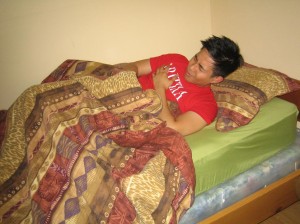Osteoporosis is a condition that affects individuals all over the globe, not just the elderly. Even young individuals can suffer from osteoporosis. The condition is characterized for the increased porosity of the bones in the body. The brittle bones increase the risk for fractures and diminished mobility among those who are diagnosed with the condition. By understanding the effects of osteoporosis on the body, it provides an insight in order to take the appropriate steps to prevent the condition from developing.
How osteoporosis affects the bones
It is important to note that osteoporosis weakens the bones and joints in the body. The fractures can be caused by the thinning out of the bone mass. Osteoporosis basically eats away at the spongy interior of the bone which is known as the trabecular bone mass. The condition can cause substantial damage that can limit the movement of the individual. Any fall, strong bump on hard surfaces or even lifting heavy objects can result to a bone fracture. The common sites for fractures include the spine, hip, wrists and the hips. In some cases, it can also affect the shoulders, elbows and knees.
Physical deformity
In some cases, osteoporosis can cause the spine to bend forward (Dowager’s hump) and contribute to the overall loss of height. Take note that the effects of compression fractures in the spine can often lead to the distortion of the spine, resulting to a stooped appearance.

Chronic pain
Chronic pain is another effect of osteoporosis to the body and can be severe, thus debilitating the individual. The pain is frequently triggered by the force on the vertebrae, pushing bone against bone and also the nerves and the surrounding tissues. These effects can also be sensed in the shoulder, knee, hip and wrist joints. You can learn how to manage pain by simply enrolling in a first aid class.
Compression of the internal organs
Once the spine starts to develop anomalous curves, some can experience breathing difficulty and abdominal pain as the internal organs are being compressed. The lack of back support due to the curvature of the spine results to the sinking of the rib cage into the soft tissues of the abdomen and cramping the internal organs such as the stomach, lungs and intestines.
What causes osteoporosis?
Osteoporosis is considered as a progressive disorder which simply means that the bones continue to weaken and thin out if appropriate steps are not taken to slow down the reduction of the bone mass. The condition is mainly caused by the lack of calcium intake which is a mineral that contributes to the bone health and strength.
Additional risks tend to increase in terms of ethnicity since Caucasian and Asian women are prone to suffer from osteoporosis. Other risks include smoking, sedentary lifestyle and family history. Osteoporosis is commonly present among women who have gone through menopause and experienced a drop in the hormone estrogen. Take note that estrogen also helps contribute to bone growth and strength.
